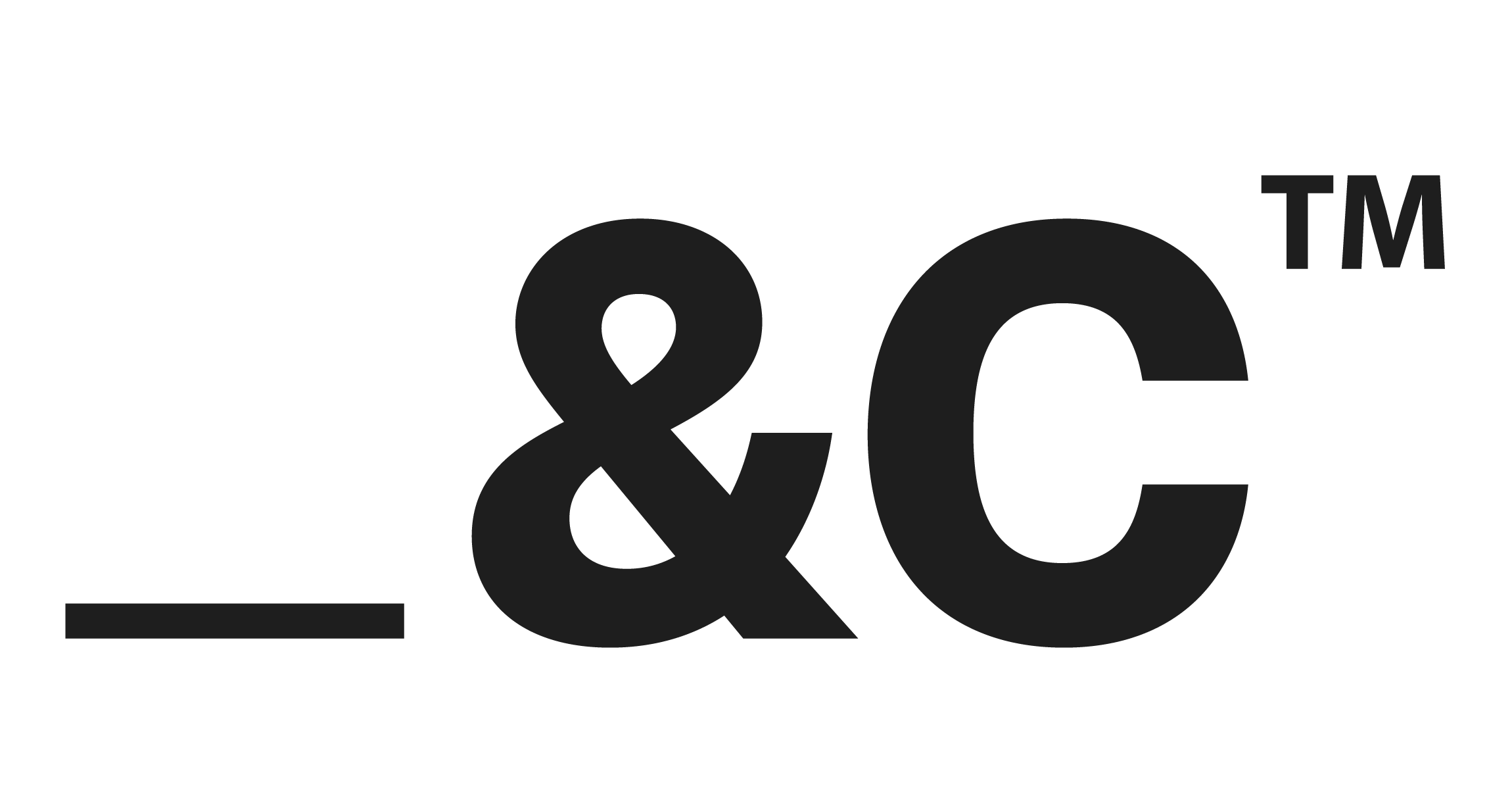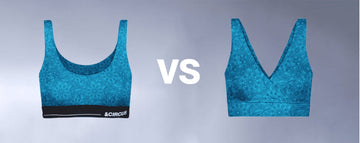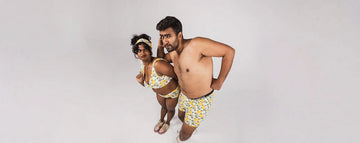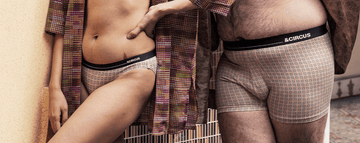The clothes we wear closest to our skin are starting to speak louder than ever. For those with sensitive skin, expectant mothers, or anyone who's ever felt the sting of an allergic reaction, the quest for comfort isn't just about softness it's about safety. Enter hypoallergenic innerwear, a quiet revolution in fashion that's gaining momentum, driven by brands using education to empower consumers. This isn't just about fabric; it's about a movement toward healthier, more sustainable living.
Uncomfortable underwear shouldn't steal your confidence. At Andcircus, we craft ultra-soft, sustainable Lenzing Modal Micro® innerwear for every body, XS to 5XL. From briefs to bras, our custom packs fit you perfectly. Shop risk-free with our 100% satisfaction guarantee and embrace comfort that includes everyone. #LoveEveryBody. Shop Now!
Educational Campaigns Drive Demand for Hypoallergenic Innerwear Solutions
As skin sensitivities become more common, consumers are rethinking what they wear. The global rise in allergies whether to food, skincare, or fabrics has sparked a demand for products that promise gentleness. According to Grand View Research, the sensitive skincare market is booming, with the hypoallergenic cleanser market alone valued at USD 1.333 billion in 2024 and projected to hit USD 1.812 billion by 2033, growing at a CAGR of 3.9%. This trend spills over into apparel, where eco-friendly micromodal innerwear is carving out a niche. Micromodal, derived from beechwood, is prized for its softness, breathability, and low-allergen potential, making it a go-to for those with reactive skin.
Brands like AndCircus are leading the charge, not just by crafting underwear from micromodal but by teaching consumers why it matters. Their campaigns highlight how these fabrics sidestep common irritants like harsh dyes or synthetic fibers, offering relief to women, men, and expectant mothers alike. It's a response to a growing need: with skin conditions like eczema and psoriasis on the rise, and parents increasingly wary of allergens, hypoallergenic innerwear isn't a luxury it's a necessity.
A Surge in Safer, Softer Choices
The demand for hypoallergenic innerwear is part of a broader shift toward health-conscious living. Social media amplifies this, with influencers sharing raw stories of skin struggles and solutions. Scroll through Instagram, and you'll find posts praising chemical-free, fragrance-free fabrics that don't aggravate sensitive skin. This mirrors trends in related markets, like hypoallergenic baby food, where Future Market Insights notes a market size of USD 3,560.7 million in 2025, projected to reach USD 5,015.3 million by 2035 at a CAGR of 3.5%, driven by rising food allergies among children. Similarly, the hypoallergenic infant formula market for cow's milk protein allergy (CMPA) is expected to grow from USD 4,370 million in 2024 to USD 9,518.7 million by 2032, with a CAGR of 8.6%, per Credence Research. These numbers underscore a universal truth: consumers want products that prioritize safety without compromising quality.
Micromodal fits this bill perfectly. Its moisture-wicking properties keep skin dry, while its natural origins reduce the risk of irritation. For expectant mothers, who often face heightened skin sensitivity, or men with conditions like eczema, this fabric offers a reprieve from the itch and discomfort of conventional materials. Brands are tapping into this by emphasizing not just comfort but also sustainability, appealing to eco-conscious shoppers who want their purchases to align with their values.
Brands Educating for Impact
AndCircus doesn't just sell underwear; they're building a community around skin health. Their campaigns think webinars, blog series, and partnerships with dermatologists dive deep into why hypoallergenic fabrics matter. They've hosted skin health awareness days, where customers learn about triggers like synthetic blends or harsh detergents. User-generated content plays a big role, too. On platforms like X, customers share testimonials about how switching to micromodal eased their skin woes, while influencers post before-and-after stories of flare-ups tamed by better fabric choices.
These efforts resonate because they're rooted in empathy. By collaborating with experts, AndCircus bridges the gap between fashion and wellness, offering practical advice alongside their products. It's a strategy that pays off: engaged customers are more likely to return, and transparent messaging builds trust in a market often muddied by vague claims.
Navigating Misinformation and Market Noise
Not everything labeled “hypoallergenic” is created equal. The term lacks standardized regulation in apparel, leading to skepticism among consumers wary of greenwashing. Many assume “organic” automatically means hypoallergenic, but that's not always true organic cotton, for instance, can still harbor dyes that irritate sensitive skin. This confusion is a hurdle for brands striving to stand out. The fashion industry's history of exaggerated claims doesn't help, with some companies slapping “eco-friendly” on products with questionable credentials.
AndCircus tackles this head-on with clear, fact-based education. Their blog posts break down the science of skin sensitivity, explaining why micromodal's closed-loop production process minimizes chemical exposure. By addressing misconceptions directly, they're fostering trust a critical factor when 30% of the global hypoallergenic cleanser market, per Global Growth Insights, is driven by U.S. consumers in states like California and New York, where informed shoppers demand transparency.
Seizing Opportunities Through Education
In a crowded eco-fashion market, education is a differentiator. Brands that invest in it like AndCircus are seeing results: higher engagement, fewer returns, and stronger loyalty. By partnering with dermatologists and allergy organizations, they're reaching niche audiences, from post-partum mothers to men with chronic skin conditions. These collaborations also open doors to upselling, as brands bundle hypoallergenic benefits with sustainability credentials, appealing to buyers who value both health and the planet.
There's untapped potential here. The rise in CMPA awareness, as noted in the infant formula market, suggests parents are increasingly vigilant about allergens across the board. Hypoallergenic innerwear for babies or maternity wear could be the next frontier, especially in regions like Asia Pacific, where Credence Research highlights rapid growth driven by rising birth rates and retail access in countries like China and India.
Measurable Wins from Awareness
The numbers tell a compelling story. Brands that prioritize education see tangible benefits: increased average order values, repeat customers, and lower return rates as buyers find products that actually work for their skin. AndCircus, for instance, reports higher engagement on their educational content, from blog clicks to webinar sign-ups. By positioning themselves as advocates for skin health, they're not just selling underwear they're building a loyal community that values transparency and results.
A Health-Forward Future for Fashion
The future of hypoallergenic innerwear is bright, but it's not without challenges. Experts predict stricter labeling standards are coming, as consumers demand clarity over buzzwords. Innovations like AI-based fabric testing or personalized skin-health recommendations could further transform the industry, making it easier for shoppers to find what works for them. For now, brands like AndCircus are setting the pace, proving that advocacy and innovation can coexist.
As we move toward a more inclusive, health-conscious world, the clothes we wear closest to our skin will play a bigger role in our well-being. Hypoallergenic innerwear isn't just a trend it's a testament to how education can reshape an industry, one comfortable, sustainable choice at a time.
Frequently Asked Questions
How are educational campaigns helping consumers choose hypoallergenic clothing?
Educational campaigns raise awareness about the benefits of hypoallergenic fabrics, emphasizing their role in reducing skin irritation and allergic reactions. These efforts use storytelling, informational content, and influencer engagement to promote more skin-friendly material choices.
What materials are commonly recommended in hypoallergenic apparel promotions?
Campaigns often highlight natural, breathable fabrics like organic cotton, bamboo, and micromodal, which are less likely to cause skin sensitivity. These materials are marketed as ideal for individuals with sensitive skin or allergies.
Why is hypoallergenic fashion gaining popularity among young consumers?
Young shoppers are increasingly aware of both skin health and environmental impact. Educational efforts have connected hypoallergenic apparel to wellness, self-care, and sustainable living, making it a preferred choice among health-conscious, eco-aware demographics.
Disclaimer: The above helpful resources content contains personal opinions and experiences. The information provided is for general knowledge and does not constitute professional advice.
You may also be interested in: Role of the Fashion Industry in Shaping Body Image
Uncomfortable underwear shouldn't steal your confidence. At Andcircus, we craft ultra-soft, sustainable Lenzing Modal Micro® innerwear for every body, XS to 5XL. From briefs to bras, our custom packs fit you perfectly. Shop risk-free with our 100% satisfaction guarantee and embrace comfort that includes everyone. #LoveEveryBody. Shop Now!







































